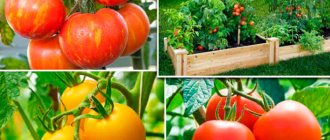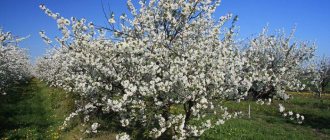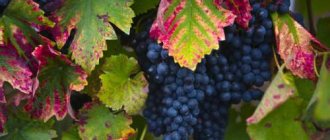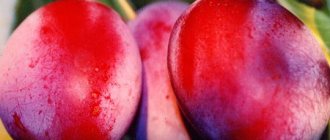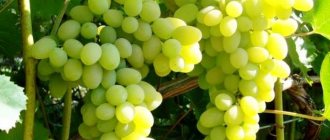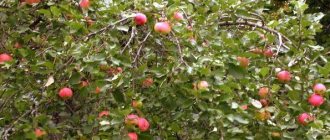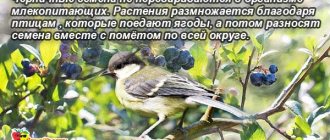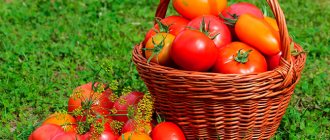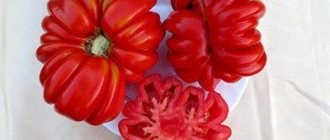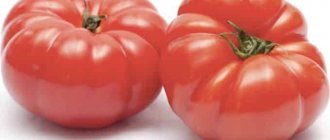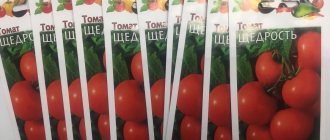Features of the climate of the region and the choice of varieties
Growing tomatoes in the Leningrad region is an art, although the main agricultural techniques are traditional. It is necessary to take into account the specific climate of the area:
- high humidity;
- short period of warm days, coolness in summer;
- a small number of sunny days;
- early onset of cold weather.
Based on this, tomato varieties for the Leningrad region must withstand low light, cold, and temperature changes. In conditions of high humidity there is a risk of disease, so resistance to infections, including the dangerous late blight, is important. Preferable are early hybrids that manage to quickly form a harvest and accumulate sweetness in the fruits even with a minimum amount of sun.
The State Register of the Russian Federation indicates zoned varieties for the Leningrad region and for the North-West in general. Hybrids intended for the regions of Siberia, the Far East, and the Urals are also suitable for planting. Tomato seeds for the Leningrad region are offered by agricultural firms Gavrish, Sortsemovoshch, Aelita, Sibsad, SeDek.
The crop is grown in a variety of shelters, film and polycarbonate greenhouses. Sowing of tomato seedlings in the Leningrad region begins at the end of February, always using additional lighting. Since the soils in the region are mainly podzolic, organic matter and complex compounds are added according to the norm to improve fertility indicators. Planting in a greenhouse or polycarbonate shelters is at the end of May; tomatoes are placed on ridges no earlier than the first week of June, focusing on the weather.
Indeterminate varieties
Among the indeterminate tomatoes, there are many that are well adapted for cultivation in the cold climate of the northwest. Here are some of the most popular:
Northern beauty
A representative of this species reaches 150 cm in height, and therefore requires mandatory tying to a support. It begins to bear fruit 120 days after the first leaves appear, producing a harvest of pink fruits with dense and sweet juicy pulp.
From one inflorescence, 5–6 tomatoes are formed, weighing from 60 to 120 g.
This is one of the best tomato varieties for the north-west, resistant to fusarium and other dangerous diseases, and tolerates sudden changes in temperature. If you love elongated plum-shaped tomatoes, then take a closer look at this variety.
Mithridates f1
This is a mid-early indeterminate hybrid with a vegetative period of about 110 days. It is no secret that hybrids are more resistant to severe weather conditions, and are more resilient to diseases.
This species can be grown all year round. In summer - in open ground, and in winter - in a greenhouse.
This tomato is characterized by shortened internodes, which makes it possible to cultivate it in greenhouses with a low trellis. The brush extending at a right angle from the stem contributes to the uniform formation of the fruit.
Early tomatoes for the Leningrad region
The group with short ripening periods takes first place among the varieties grown by gardeners in the region. These are the tomatoes:
- Parodist is a recently appeared variety that has shown itself well in the difficult climate of the Leningrad region. The bushes are small and do not require pinching. Tomatoes are ready for harvesting (technical ripeness stage) at about 80 days. It is considered a high-yielding salad variety, the fruits are large, up to 150 grams;
- Alpha - included in the State Register, gives the best results on ridges. Valued for its excellent taste (despite the early harvest time) and unpretentiousness. Standard plants are not planted, only stakes are placed for support when the fruits come;
- Beta Lux - belongs to the group of ultra-early ripening plants, produces tomatoes well. The fruits, filled with juice, weigh about 80-100 grams. Suitable for any purpose, delicious in salads. 2-2.2 kg of tomatoes are harvested from the plant;
- Rumyanets St. Petersburg is a disease-resistant nightshade variety with pink-red fruits. The harvest ripens quickly; after 85 days, green tomatoes can be harvested. They ripen well at home. Most often this variety is canned;
- Scarlet candles - his tomatoes have an original shape - elongated, with a “spout” similar to the tongue of a candle flame. In any summer season, it “knits” together fruits suitable for pickles and pickling. The plants are powerful, so they need shaping (two trunks) and pruning of the shoots.
- Hurricane F1 - belongs to the group of carpal varieties of the crop. Usually they lead it into one trunk, all side stepsons are removed. Tomatoes in clusters are even, about 5 pieces each, weighing 100-120 grams. For a hybrid, the taste is pleasant and truly tomato-like. For salads, it is recommended to let the fruits ripen on the bushes, the taste will be sweeter;
- Northerner is a tomato whose originator is agro. Fruits weighing up to 180 grams ripen on the first cluster, and this is for the standard variety. This unpretentious plant is well adapted to low light conditions and low temperatures. It is easy to grow even for inexperienced gardeners. Harvesting - after 92 days, the fruits ripen in clusters;
- Yvette F1 is a hybrid form, characterized by good keeping quality of ripe fruits and suitability for transportation. On powerful bushes, clusters with 5-6 fruits are formed, weighing 150 grams. It is advisable to plant on beds under non-woven material, under film;
- Summer Garden is an interesting hybrid of new generation tomatoes. Developed specifically for Russian regions with a temperate climate and low temperatures. The bushes are suitable for planting in any shelter, as well as in beds. The tomatoes are round, slightly flattened, with a good pleasant taste.
- Rocket - got its name because of the resemblance of the fruit to a rocket. The vegetables are elongated, dense, with a characteristic “spout”. Glossy skin. By weight - 50-60 grams. The leveled fruits are canned, various marinades and pickles are made.
On a note! When growing, place 6-8 bushes per square meter. In dense planting conditions, Rocket bears fruit abundantly.
Early varieties are not as productive, but they are stable and reliable.
Varieties for the Leningrad region by ripening time
According to the ripening period, tomatoes are divided into several types:
- Ultra-early ripening: Yamal, Sanka, Leningrad giant, Buyan, Yantarny.
- Early ripening: Agatha, White filling, Gina.
- Middle early: Ballad.
- Late ripening tomatoes: Leningrad autumn.
Note! The taste of the vegetable depends on the speed of ripening. The longer a tomato ripens and hangs on the branch, the sweeter it becomes.
Gardeners in the Leningrad region who grow tomatoes in their dachas recommend the following varieties:
- Yamal. It is an ultra-early ripening, low-growing, determinate plant; it can be grown in the garden and in a greenhouse. The plant is adapted to the harsh conditions of cold summer and does not get sick. Fruits 80 g each, round in shape, slightly corrugated skin. You can get up to 17 kg per square meter. The color is classic, the flesh is dense. This variety is universal and suitable for transportation.
- Amber. Ultra early ripening. It got its name because of its color: the fruits are bright yellow, perfectly smooth, no more than 70 grams. The bushes are low-growing - they reach a height of 30 cm, but they produce a rich harvest, tolerate temperature changes and lack of light well, do not get sick, and do not require tying up. There are no disadvantages. Can be used raw and canned. Planting only through seedlings, not suitable for sowing in the ground.
- Leningrad giant. Ultra early ripening. Reaches from 70 cm to a meter in height, requires garter. The fruits are flat-round in shape, resemble a heart, reach a weight of 400 g, the skin is smooth, the flesh is sweet and juicy. Due to their large size, they are not suitable for pickling; tomatoes are best eaten raw.
- Gina. Refers to an early ripening species. Does not get sick, tolerates bad weather conditions, but sometimes requires protection. The fruits reach 200 grams, they are round in shape, slightly flattened, are perfectly stored and can withstand transportation. The color of the tomato is red, the skin is dense, thick, the taste is sweet and sour, brightly aromatic.
- Ballad. Refers to mid-early low-growing varieties. They love it for its good transportability and high yield. The fruit is red, the skin is thin, the aroma is rich, the taste is sweet and sour. They are consumed raw and used to make salads and sauces. Reviews about it are only positive.
- Leningrad autumn. Late ripening, powerful, tall appearance. Gives a stable high yield in any weather conditions, does not get sick. The fruits are red-orange, flat-round, medium-sized, sour, with minimal sugar content. Suitable for salads.
Note! Ultra-early ripening tomato varieties are suitable for growing in greenhouses.
The best tomato varieties for cultivation in open ground
Gardeners who grow crops directly on the beds note the excellent taste of such vegetables and their inherent aroma. At the beginning of summer, as well as in August, plants are protected from cold weather and possible frosts. When choosing which tomato varieties are suitable, priority is given to species that are resistant to infections and cold.
Baltic
Bred by breeders to adapt to the humid and cool climate of the North-West. A short summer is not a hindrance to this variety; the harvest forms quickly and does not get sick. Tomatoes with fleshy contents weigh 120-150 grams. Seeds are often sold in the Northern Collection category.
Chanterelle
Summer residents of the Leningrad region give positive reviews to this orange-fruited variety. Plants up to 0.6 meters, with moderate foliage. Since there are a lot of fruits during the ripening period, it is recommended to tie the branches and the trunk itself to strong supports.
Amber
From the group of low-growing varieties, it is therefore better to plant directly in the beds. Often, summer residents plant Yantarny in containers on the balcony, and then bring them to the country house. The bushes are decorative, especially when strewn with orange tomatoes. They weigh 50-70 grams.
The fruits of Amber are delicious - with a honey aroma, juicy. There are few seeds in the pulp, but in terms of content, this low-growing tomato is superior to many indeterminate yellow varieties. Since tomatoes have a thick skin and small size, they are most often used for canning and pickling.
White filling
An undeservedly forgotten white variety by many, suitable for open-air cultivation. Does not require complex care; stepsons do not need to be removed.
On a note! It is advisable to provide pegs for tying up bushes during the harvest period.
Fruit harvests are stable in any summer season. Tomatoes are leveled, up to 100-130 grams, first green and white, then red. Most often, gardeners harvest White filling at the stage of technical ripeness, ripening them at home in boxes and crates. Does not crack. The taste is pleasant, with a characteristic sourness. Considering that the fruits ripen early, the variety is used mainly for salads.
Severenok F1
A good hybrid designed for planting in moderate temperatures. Suitable for the North-West, as it quickly produces a crop and is not susceptible to late blight.
Bushes grow up to 70 cm; summer residents usually remove stepsons up to the first tier. The rest is standard care. Tomatoes are harvested as early as July and used for processing and salads. The fruits are fleshy, have a pleasant taste, last a long time and tolerate transportation well. They weigh 120-140 grams.
Apparently invisible
Refers to varieties with extended fruit production. Suitable for cultivation in beds, it produces an excellent harvest in the cool summer season.
The first tomatoes are tied in a cluster above the 4th leaf. Round, dark green at first, then gradually turning a rich pink color. Weigh no more than 120 grams. Like many new varieties, Apparently it is invisibly distinguished by good taste, while the tomato is an early one, ripening within 90 days.
Siberian Troika
A variety for regions with temperate climates. It is distinguished by strong seedlings and fast setting of tomatoes. Plants reach the technical ripeness phase in a short time, the fruits are ready for harvesting after 90 days.
The tomatoes are elongated, similar to bell peppers, 10-14 cm long. Up to 5 kg are harvested from the bush, and even in short summer conditions the fruits have time to gain sweetness. They are used for salting to prepare various dishes. Many housewives preserve this tomato, which looks beautiful when mixed with cucumbers and squash.
Growing and caring for tomatoes
When the summer resident decides on the variety, the main part of the work begins, planting seedlings. The summer resident chooses the timing himself; it is advisable to plant it in a permanent place in early June. Until then, planting material is grown at home.
Prepare the soil, etch it and make grooves. The sowing depth is no more than 5 cm. Then the containers are removed to a warm, dark place until seedlings appear. Pre-tightened with polyethylene or covered with glass.
High-quality care is required for seedlings. Strong seedlings are the key to a future harvest. If there is a lack of light, additional lighting is organized. Then the tomato stems will be more powerful, the plants will bloom in time and form ovaries.
Feed the plants before and after diving. Use organic matter or complex mineral fertilizers.
Varieties of reliable tomatoes for greenhouses
Breeders have tried to develop productive varieties for this difficult region that are resistant to frequent weather changes. Not only early, but also mid-season and late tomatoes are cultivated in shelters, which manage to produce results before the onset of cold days.
The best varieties:
- Northern beauty is a variety with high immunity that successfully withstands temperature changes. It bears fruit well in shelters and produces elongated tomatoes with an elongated “spout.” Weight: 80-120 grams, with a dense shell. The contents are sweet, rich pink;
- Black Prince is one of the exotic varieties, as it produces brown tomatoes with a black tint. They weigh up to 500 grams and are mainly suitable for making salads. The bushes grow powerful, up to 2-2.5 meters, so in polycarbonate greenhouses it is necessary to prepare trellises or install stakes for supports. This tomato is little susceptible to major diseases and is valued for its juiciness and excellent taste;
- Flash - will give a large number of small (up to 80 grams) tomatoes. The harvest yields quickly (as it flares up), the taste is pleasant, with a characteristic sweetness. Tomatoes are suitable for long-term storage and do not deteriorate during transportation;
- Misha in the north is assessed as a productive tomato with medium-sized fruits. Ultra-early dates, so the plant is not afraid of diseases. Tomatoes are of good taste and aromatic. Many tomatoes of this ripening period are characterized by sourness, but Mishka in the north lacks it;
- Fighter - may be found in catalogs under the name Brawler. Suitable for greenhouses with film cover, planting under arcs in beds. Can grow in open ground. Does not require removal of stepsons, requires minimal care. In simple inflorescences, red “cream” weighing 50-70 grams is formed. In the first clusters the tomatoes are slightly larger, then they are small and even. 2-3 kg are collected from the plant.
- Leningradsky early ripening tomato - according to the description, this is a hybrid form, known to gardeners in the region for its early harvest. In the conditions of the North-West it gives good results, the products are suitable for sale. Medium-sized tomatoes, 100 grams each, rich red-pink color;
- Autumn Leningradsky - a poetic name given to the tomato in honor of the region. The variety has a medium harvest period, is distinguished by its tall growth and resistance to lack of sunlight. It sets tomatoes well in unfavorable conditions, but the yield in a good summer is much higher. Tomatoes up to 120 grams, traditional round shape, with regular taste;
- The Leningrad giant is a tomato that has earned only kind words from gardeners in the Leningrad region. It is praised for its taste, friendly formation of ovaries, stable yield and large weight of tomatoes. By weight – 280-300 grams, use – for salads. It is necessary to form the plant in a greenhouse and remove the side stems;
- Dobrun F1 – the originator is . The hybrid form is intended for cultivation in temperate climates (in shelters). A very tall bush, up to 2-2.5 meters, forms powerful inflorescences after the 11th leaf. There are no creases in the brush, the fruits are even, the weight is 150-160 grams. When inflorescences are formed, large tomatoes weighing 200-230 grams are obtained. Ripe Dobrunya fruits can be stored at home for up to one and a half months;
- Baron F1 - when cultivated in conventional film shelters, up to 15 kg is collected from one square meter. Very productive, unpretentious hybrid, good sweet taste. Fruit collection - on the 115th day. Tomatoes weighing up to 140 grams, bright burgundy or red.
The given tomato varieties are resistant to unfavorable conditions in the northern regions and tolerate temperature changes that often occur in greenhouses.
Popular tomatoes from St. Petersburg beds
Many gardeners and summer residents who have plots in the Leningrad region do not undertake to grow tomatoes in open beds, although in our time there are a sufficient number of varieties of this vegetable that meet the conditions for their cultivation in the northwestern region. Tomatoes with early or medium ripening are suitable for beds near St. Petersburg. True, in the second case, against the backdrop of sharp changes in temperature, thick and cold precipitation characteristic of this area, the risk of plant disease with late blight increases. Among the most suitable varieties are Baltic, Northern Beauty, and Chanterelle.
Tomatoes with early or medium ripening are suitable for beds near St. Petersburg
Baltic
The Baltic tomato was bred by the St. Petersburg SSPP “Sortsemovoshch”. Early ripening salad variety (100–110 days from germination). Can be grown in a greenhouse and in the garden. The plant is determinate, grows up to 1–1.2 meters. It needs to be tied up and shaped.
Baltic tomato from St. Petersburg SSPP “Sortsemovoshch” - an early ripening lettuce variety
Not very dense, flat-round red fruits of this variety gain a weight of 120–160 grams. Tomatoes grow close in size. They taste sweet and meaty. Tomatoes ripen from the end of July and throughout August. Under film cover, the yield is more than 4 kg per square meter.
There were also a lot of tomatoes at Baltiysky, the harvest was quickly lost and the bushes turned yellow, but they were simply strewn with tomatoes and ripened at the same time, but the taste was average
three N
https://dacha.wcb.ru/lofiversion/index.php?t38141–500.html
Northern beauty
The mid-season salad tomato variety Northern Beauty was bred by individual entrepreneur Elizaveta Kudryavtseva. About 120 days pass from seed germination to the receipt of the first ripe fruits. The plant is indeterminate, up to one and a half meters high, needs staking and shaping.
The mid-season salad tomato variety Northern Beauty was bred by Elizaveta Kudryavtseva
Pear-shaped pink sweet fruits weigh 60–120 grams. Taste rating: excellent. Plants are tolerant to heat, drought, and cold. The variety is resistant to tobacco mosaic virus and fusarium.
Northern beauty is a tall, productive tomato variety. Similar in constitution to De Barao. The fruits are medium-sized, oblong, pointed at the end, excellent taste, long-lasting. The variety is hardy, suitable for open ground, and sets fruit even under unfavorable conditions. I grow it into one or two stems.
Victor Barnaul
https://dacha.wcb.ru/index.php?showtopic=6055&st=200
Chanterelle
Chanterelle is a mid-early determinate variety bred from St. Petersburg. Tomato grows up to 0.8 meters high. It can be cultivated on private farms under film covers or in beds. The stems are weak, the plant requires staking and shaping.
The Chanterelle variety is resistant to temperature changes
Smooth orange cream of medium density weighing up to 130 grams can be eaten fresh or used for home canning. They have excellent taste, store well and can be transported without problems, and the harvest, which is harvested from mid to late summer, is about 9 kg per square meter. A distinctive feature of the variety is the excellent resistance of plants to temperature changes.
I am also happy with Chanterelle and plant it every year. This year I tried the Luch variety. Its fruits are almost identical to those of the Chanterelle, but the bush is a little shorter in height. It seemed to me that Luch knits fruit better. I have gaps on Chanterelle.
ivk78
https://www.forumhouse.ru/threads/369754/page-40
Low-growing tomatoes for the Leningrad region
The favorites of summer residents in the region are small-sized tomatoes that are cold-resistant and not susceptible to infections. They are planted immediately on ridges, greenhouses or tunnels are prepared, and arcs with film are arranged. Their yield is not as high as that of their indeterminate relatives, but they are reliable, do not fail in temperate climates and do not require complex agricultural techniques.
Nevsky
It is advisable to plant under shelters, as the yield will be higher. The bushes are dwarf, cold-resistant, the growing season is up to 95 days. The tomatoes are not large, but have a good, bright taste. Suitable for assorted vegetables and pickles.
Argo
Plants up to 40 cm high, hung with tomatoes. The bushes are erect, with corrugated leaves typical of standard trees. The clusters are simple, arranged compactly, and five fruits are formed. At first they are light green, then red, with slight ribbing. They weigh up to 70 grams, and are mainly used for pickling and eating fresh.
Yablonka
Gardeners value the variety for its resistance to high humidity. With frequent rains in the region, the Apple tree bears fruit abundantly and does not get sick. The tomatoes weigh 80-100 grams, tasty, with an unusual spicy note. Suitable for both preparation (salted, canned) and for fresh consumption.
Sanka
A variety of low-growing tomatoes beloved by many summer residents in the region. On the ridges the bushes grow no more than half a meter, the tomatoes set quickly and amicably. Duration – 90-95 days.
It is important to harvest this variety on time, otherwise it will not be as sweet and tasty when overripe. Sanka is resistant to diseases, managing to “escape” late blight in the early stages.
Yamal
Surprisingly, with its 25 cm, this plant produces a good harvest of fruits. Dwarf bushes of standard type, with dark green foliage. In simple inflorescences fruits up to 120 grams are formed.
On a note! Yamal is considered one of the most delicious early ripening tomatoes.
Sets tomatoes even during long periods of low temperatures, well adapted to humid climates
Ballad
A representative of varieties of low height, but excellent yield indicators. Tomatoes of good taste, 150-180 grams, dark burgundy color. Well suited for planting in tunnels, yields 9 kg per 1 sq. meters. There are 5-6 tomatoes on one bush.
Shuttle
A cold-resistant popular variety, widespread in all areas of this region. On the ridges it gives a good harvest, 7-8 kg per 1 square meter. Registered in the State Register, considered a universal variety. The tomatoes are elongated, like “boats,” with a dense consistency and red-orange color. Weight – 80-100 grams. The Chelnok variety is usually recommended for beginners, since no one will be left without a harvest in any conditions.
Leningrad chill
This tomato doesn’t care about anything: lack of sun, excess moisture, coolness. It manages to yield the harvest quickly, by the beginning of July, even in the conditions of the North-West. The bushes are compact, not branched, the tomatoes are collected in large, heavy clusters. The fruits are shaped like an egg, the pulp has a dense structure and is juicy. The color is rich orange with red tints.
Far North
It grows quickly and yields quickly. The fruit harvest rates of this low-growing tomato are low, but it will delight you with early production. Smooth as balls, red tomatoes ripen together and are suitable for pickles and fresh eating.
Spout
This variety is planted only in greenhouses. It is small in height, up to 60 cm, and produces an excellent harvest of orange “cream” with a sweet taste. The non-capricious tomato “knits” fruits in any conditions and is resistant to low light. In terms of timing, it is medium late, but in the Leningrad region it manages to produce a harvest in shelters. Tomatoes weigh up to 80 grams, are shelf-stable, and are suitable for transportation. Since they ripen later, in August, they are used for preparing winter supplies (pickles, canning).
Amur standard
It has become famous in many regions and is appreciated by summer residents of the North-Western regions of the country. It grows up to half a meter, unripe tomatoes are light green, then, as they ripen, they turn dark red. One plant can produce up to 4-5 kg. A non-capricious variety, resistant to all negative weather factors. Does not reduce performance even during prolonged precipitation and on cool days, does not get sick.
Cornet
This miniature variety will surprise you with its beautiful glossy tomatoes. The bushes grow up to 40 cm, in the fruiting stage they are completely strewn with round tomatoes. The cornet does not need to remove lateral shoots; it grows well in the open air and does not get sick. Responsive to watering. Fruits of balanced taste, with bright notes of sweetness.
Polar early ripening
The originator of the early ripening plant is “Siberian Garden”. Belongs to determinate varieties, bushes with little foliage. Tomatoes receive enough light and heat and ripen quickly. I reach a weight of 100 grams, under comfortable conditions – up to 150 grams. Tomatoes are multi-chambered, dry matter content is 6-7%, very sweet.
Finger
Adapted to cold weather, dwarf in appearance (bushes up to 40 cm), with plum-shaped tomatoes. It is distinguished by its plasticity, grows well directly on ridges, and is not susceptible to late blight. The harvest is harvested early, after 90 days. No special agricultural technology is required: watering, fertilizing and loosening.
Summer resident
The bushes are very compact, up to 50 cm, the stepsons are not removed. At the moment of ripening, the plants are tied to small pegs, since they can tilt under the weight of the fruit. Manages to “escape” late blight and is weakly affected by other diseases. A good option for those summer residents who rarely come to the site. Tomatoes of the summer resident variety 50-80 grams, with thick skin. The main use is preservation.
For cultivation in the difficult climate of the Leningrad region, it is recommended to choose zoned varieties. They are unpretentious and stable, so even in the cool and rainy season the gardener will have a harvest.
"White filling"
Another popular variety is the “white filling” tomato. Reviews from gardeners in several regions of Ukraine, Russia, Moldova, and Kazakhstan confirm its reputation as unpretentious and capable of producing a good harvest in almost any conditions.
The high threshold of frost resistance allows it to be grown in the Leningrad region in open ground. This is an early ripening variety; only 100 days pass from planting to the beginning of ripening. Up to 9 plants are planted per square meter. The height of the bush is up to 50 cm. Care comes down to loosening the soil, weeding, watering (with warm water) and fertilizing.
The fruits are slightly ribbed, round in shape, weighing up to 140 grams, red in color, resistant to cracking, perfect for fresh consumption and for making salads. The yield reaches 9 kg per bush, which, of course, makes the “white filling” tomato popular. Reviews about the fruits themselves are very flattering. Fleshy, sweetish, they are suitable for consumption not only directly from the garden, but also for canning and pickling.
Harmonious ripening of fruits helps to avoid the massive spread of late blight. Early ripening, excellent taste of the fruit and resistance to cold and wind make this variety very attractive for cultivation in the Leningrad region.
Growing conditions
As already mentioned, there are tomatoes suitable for cultivation in unprotected soil, and there are those that require shelter. Most are still not able to produce a good harvest in a cold, changeable climate, so it makes sense to take a closer look at those that reveal their maximum potential in a greenhouse. These include:
- Golden Queen;
- Palace;
- Nkvsky;
- Ground Gribovsky 1180;
- Igrandu;
- Chanterelle.
There are moisture-resistant varieties:
- Apple tree;
- Dobrun.
There are plenty of options to choose from. You can first read reviews on the Internet, find out what your fellow countrymen have planted and are planting, what their successes are in cultivating certain varieties.
All this will help you navigate and choose a variety that will meet all the requirements for it, fully meet the body’s needs for vitamins and minerals and give an unforgettable gastronomic pleasure.
